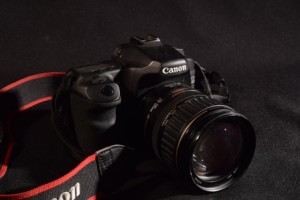How to Choose a Digital Camera
 Nowadays, everyone loves taking photographs and the best photographs are still taken with a digital camera. However, while some people may have you convinced that most cameras are all the same, don’t believe a word of it. With a dizzying assortment of specifications and varying digital camera prices, it can be hard to decide which one is right for you. So, how do you find one that ticks all your requirements? Here’s a round-up of basic specs along with a few tips to help you make your decision.
Nowadays, everyone loves taking photographs and the best photographs are still taken with a digital camera. However, while some people may have you convinced that most cameras are all the same, don’t believe a word of it. With a dizzying assortment of specifications and varying digital camera prices, it can be hard to decide which one is right for you. So, how do you find one that ticks all your requirements? Here’s a round-up of basic specs along with a few tips to help you make your decision.
A Digital Single Lens Reflex Camera (DSLR)
From portraits and long shots to detailed panoramas, the DSLR has a dedicated lens that will capture the perfect shot. With all those lenses, it also means carrying around bulky equipment, but if you’re looking for a single camera that can do everything (just keep adding lenses when you need them) get a DSLR. These cameras come with a range of specifications, features and add-ons that you need to understand to pick the best one. Here’s a quick breakdown of the basic specs that you should know about.
Basic DSLR Specifications
Frames-Per-Second – The more frames-per-second, the faster you can capture images. If you’re taking photos of animals or sporting events, a high frames-per-second count enables you to take photos in quick succession.
Autofocus Points – These are what the camera uses to focus on a point. The higher the number of focusing points, the better to capture action and fine details.
ISO Range – The ISO range measures the sensitivity of the camera’s image sensor. When you change the ISO setting, you are rendering the camera more or less sensitive to light. A higher ISO number indicates a greater sensitivity in low light, and provides more versatility.
Zoom & Prime Lenses –
A zoom lens lets you zoom in or out of the frame without moving. A prime lens has a fixed focal length, so unless you physically move, you won’t change how the image looks in the viewfinder.
Aperture (f-Number) – To put it simply, a larger aperture (oddly enough, a larger aperture is listed by a smaller number) lets more light in to the camera shutter.
Video Recording – Most DSLRs come with video capabilities. If you’re interested in video, which can usually add to the price, ask to see a camera without video.
Other Camera Options
Want all the quality of a DSLR in a less expensive and more compact form? Below are two transitional cameras that offer several good features at a lower price.
Bridge Cameras
The Bridge cameras (a digital camera with over 20x optical zoom) combines the high quality performance of a DSLR, minus the expenses, with the carefree mobility of a Point and Shoot. The best ones offer DSLR levels of control, wide-aperture lenses, along with a raw shooting setting and other extras such as Wi-Fi ability and articulated screens.
Mirrorless Camera
The mirrorless camera is similar to DSLRs, but with no optical viewfinders. Don’t have as many lenses as conventional DSLRs but are nevertheless convenient when you want DSLR level quality without the accompanying bulk. With so many choices available, buying a digital camera can be quite a complicated task. Here are some useful tips on How To Choose a Digital Camera to suit your needs.

